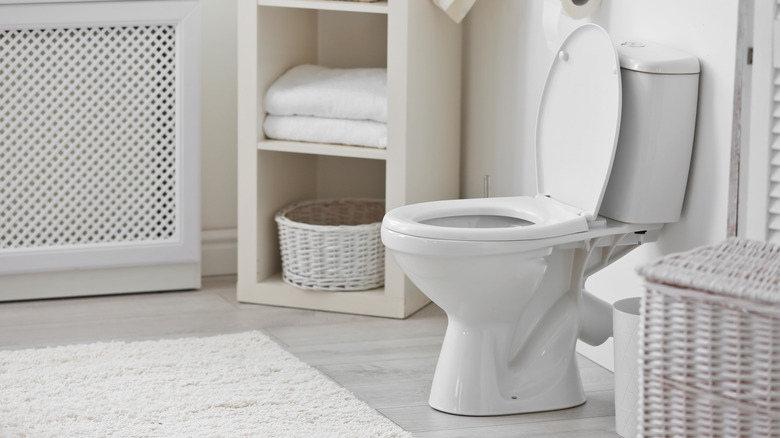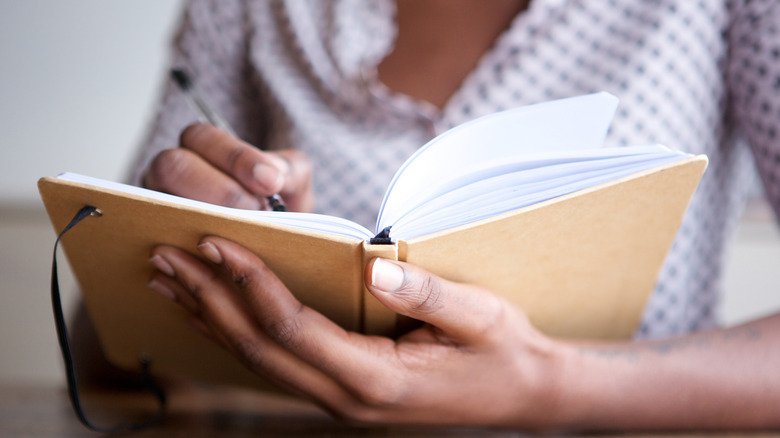Why You Should Think Twice About Using The Bathroom 'Just In Case'
We've all heard it before. You're loading everything into the car for a family road trip. The GPS is set up, you have enough snacks to last the next three weeks, and right before you leave the house, your mom says, "Did you use the bathroom? Try, just in case." Better safe than sorry, we always say, but in this case it might just be a bad idea. Your bladder can hold more pee than you think. According to The Healthy, the average bladder can hold approximately 400 to 500 milliliters of liquid. However, there are many people that actually go to the bathroom when it's only half full. Preventive peeing can actually have negative effects on the body and could lead to an overactive bladder.
As long as your bladder isn't full, holding in your pee isn't dangerous (via Healthline). Many people believe that holding in your pee can lead to UTIs, but this isn't true. According to Healthline, a UTI isn't related to putting off a bathroom break, but happens when bacteria is able to get into the urinary tract. When you pee before your bladder is full, you're tricking your body into thinking that it needs to go the minute you feel the first urge (via The Healthy). So how do you know when it's really time to go? The answer is: bladder training.
Bladder training leads to fewer bathroom breaks
According to the National Center for Biotechnology Information, there are many ways to train your body out of bad bathroom habits. The first step is recognizing your patterns by keeping a diary. By recording information such as the frequency of your bathroom trips, how much urine you produce, and how much fluid you consume in a day, you can determine the next steps to take in regulating your body.
Speaking of regularity, it's important to train your bladder to expect a certain rhythm (via NCBI). Try not to go to the bathroom the minute you feel the urge to do so. Increasing the time between bathroom breaks can help lower the level of urgency in the future — especially if there's no bathroom nearby.
According to Body and Soul, the more urine you produce in one bathroom trip can actually reduce the frequency in which you need to go. Bladder training can help increase the flow, and you can use your pelvic muscles to help. Have you ever stopped yourself mid-flow? Those are your pelvic muscles contracting (via Body and Soul). You can practice this action by doing Kegel exercises to strengthen those muscles (via The Healthy). And if that doesn't work, you can always try distracting yourself with a podcast or TV show — preferably one that doesn't show a lot of water.

